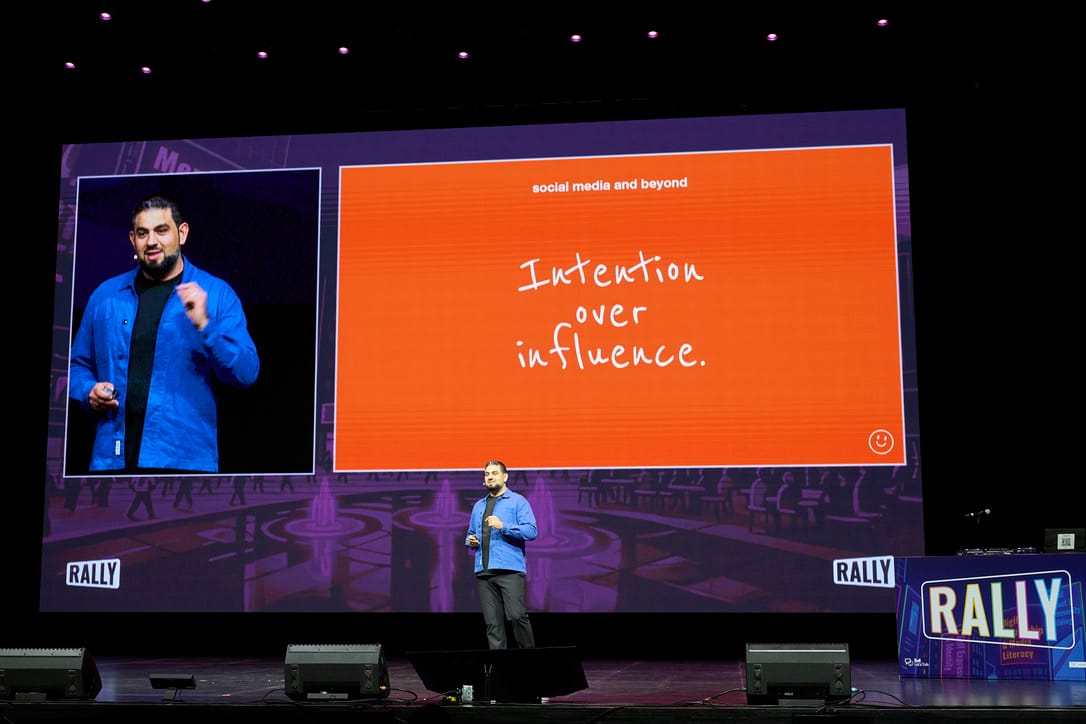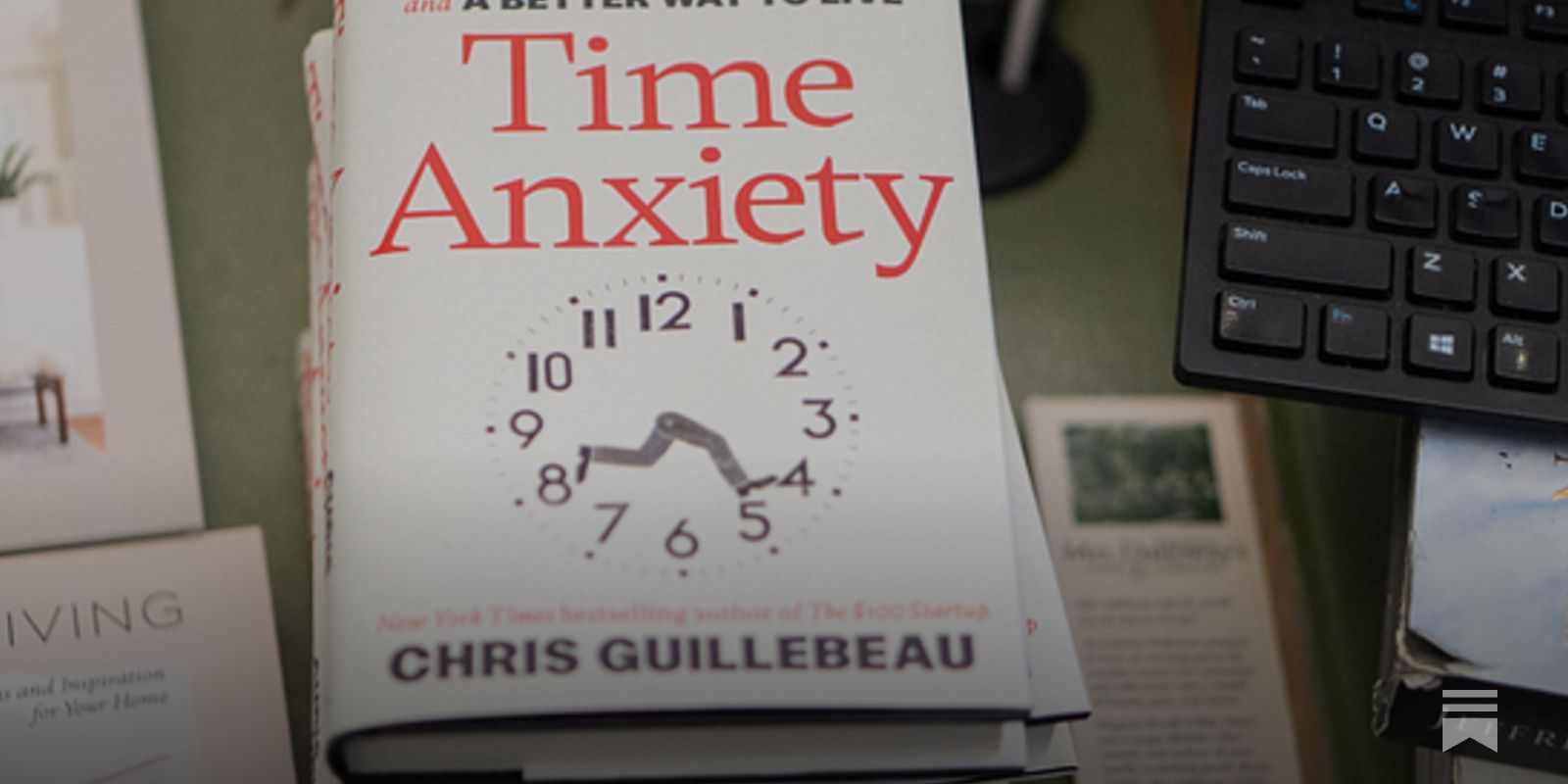- The Intersection
- Posts
- Resisting the urge for output
Resisting the urge for output
Everyday output and the urge to always be “creating”
A few weeks ago, I was driving back from Camp Re:Connect (which you may have read about in my earlier edition). The long drive from the wilderness of Muskoka to the downtown of Canada’s largest city had me thinking and reflecting in between episodes of the Prof G podcast.
Then, I felt it.
That constant hum in the background telling me to create got a bit louder on the long drive. It’s a familiar feeling that comes when I’m not in back-to-back meetings, teaching or working on a deadline.
It’s a feeling that I should be writing, recording, documenting — making something.
So I took a moment to document that, and thought about it from a bigger picture.
I’d love to know if you relate to any of this.
(There are some tips at the end if you do).
The urge for output
We’re always looking for some kind of output. If there’s idle time, it feels like I need to be writing, creating, posting — documenting or recording something original.
Sometimes it’s about productivity: getting a few tasks off the list, sending messages, booking appointments. For me it’s often an urge to create, especially if I have good energy and am feeling good.
Too much idle time feels like time I should be spending creating.
Why? As a strategist, creator, and founder, that’s basically my job. It’s where I provide value and what feels original to me.
Time feels scarce, so we press “go”
Many of those I’ve spoken to say they rarely feel like they have enough spare time. Personally, when I get a big window of time that’s open or idle, I don’t want to just leave it unused. On days with back-to-back meetings, moving around, preparing, presenting, teaching, talking, and going to events, time feels scarce.
They say rest is also productive. That doesn’t stop the pressure to act and take advantage of the opportunity.

A needed reminder from this Smiski “Rest is Productive” print designed by ©Elaine Girls
Capacity, headspace, and the readiness window
It’s not just time — it’s capacity.
When you’ve got energy and feel focused, do you feel like you should sit with it and “enjoy it”?
It feels rare for me, so I want to act and get the most from that mode. At least that often dictates what I choose to do.
If I wake up with a really high readiness score (tracked with Oura ring) plus free time, the first thing I do is think about what project I can execute on or which problem I can solve that’s tied to my creative work, business, or original content. I’ll typically deprioritize tasks like marketing admin, errands or lecture prep in that moment, because I know I can easily find a way to do those later (even if I’m tired or less “ready.”).
When I’m functioning well — brain-wise, energy-wise, health-wise, motivation-wise — it feels like that capacity should be spent on original thinking and creative output.
Executing through anything
As creators, leaders, and founders, we often have to work in any capacity — regardless of pressures, time, or energy.
New parents push through. Founders operate at their limit, still executing through crises, limited funding, team issues, or lack of sleep.
If our values are tied to output and thinking — and there’s never really a “finished” amount of content, ideas, or connections — then the pressure to keep producing or find the next thing will always be there.
Still in build mode
My business does not run on autopilot. I’m in build mode. I also can’t get away with not preparing for talks and classes.
If some of the most successful people — with recognition, business exits or leadership over massive teams — still don’t feel like they can fully rest as they’re launching something new, then someone like me early in the “climb” would feel it too.
These are huge name examples, but think about Serena Williams, who retired from tennis and immediately leaned in on Serena Ventures, raising a $111M first fund and investing in 60+ companies. Barack & Michelle Obama launched production company Higher Ground after leaving the White House, signed major content deals, won awards and keep announcing new projects. It happens on a much smaller scale, too, with many athletes, founders and political leaders.
Where does it come from?
What is that drive, that spark, that fire?
I don’t fully know where it comes from or whether it’s even all positive.
Some people operate like this from stress or anxiety.
Others come from scarcity — the need to capture everything.
I tend to operate from an abundance mindset, but I do feel the reality that nothing is permanent. Time is always passing, and you won’t get more of it. There’s some time anxiety there (a concept you can learn more about right here).
Learning to regulate
You can ask yourself:
When is the best time to really work and think?
Should I keep feeling the pressure to document and write whenever I’m feeling great?
Should I trust that the feeling will come again and that it doesn’t have to be so rare?
Maybe the answer, for me at least, is to keep optimizing health so those “ready” windows are more frequent… and to let myself enjoy them.
To be at events or be in nature, and not feel the pressure to turn everything into output.

Where do you stand?
Do you relate to any of this? When you feel the urge or pressure to create or get something done, do you act immediately? Do you ever worry you’ll lose it if you don’t?
If you also live with that “use the window” mindset, maybe the real work is learning which windows are for output — and which are for being human. Let me know.
Tips for when this happens to you
Identify what’s driving you. Is your push to create coming from purpose, scarcity, stress, or momentum? Naming it helps you choose how to respond.
Use your best energy for original work. When you’re “on,” prioritize creation over admin. When you’re “off,” swap in lighter tasks or rest.
Set a minimum viable output. Define a small, repeatable baseline (e.g., 1 post/week, 30 minutes of writing) so progress doesn’t depend on perfect conditions.
Schedule “non-output” windows. Block time for family, friends, nature, or recovery. Protect it like a meeting.
Close the loop. If you start a creative sprint, end it with a quick summary or next step so it’s easier to re-enter later.
Track readiness patterns. Note sleep, workouts, social energy, and time of day. Build your creative schedule around what actually works for you.
Redefine productivity. Count rest, reading, thinking, and conversation as inputs — not wasted time. Inputs fuel better outputs.
Win the week, not the day. If today slips, pivot. Aim for a balanced week rather than a perfect day.
These are reminders for me, more than anything.
I hope they’re valuable to you!

PS — I spoke at a conference recently, and thought my message for high school students actually connected to today’s theme.
It was about trading doom-scrolling for real-world connection.
For young people growing up in a world driven by trends, algorithms and AI, it’s easy to forget that they have their own voice (and something unique and worthwhile to say).
RALLY is an epic digital wellness festival to unpack how the next generation of Canadians can build healthy relationships with and without technology.
My talk was called From Posts to Purpose: Turning Self-Expression into Real Impact. I invited students to pause before they post, and to think about who they are and what they stand for. If you’re interested, I wrote a bit more about it on my LinkedIn post here.
Thanks for reading!
